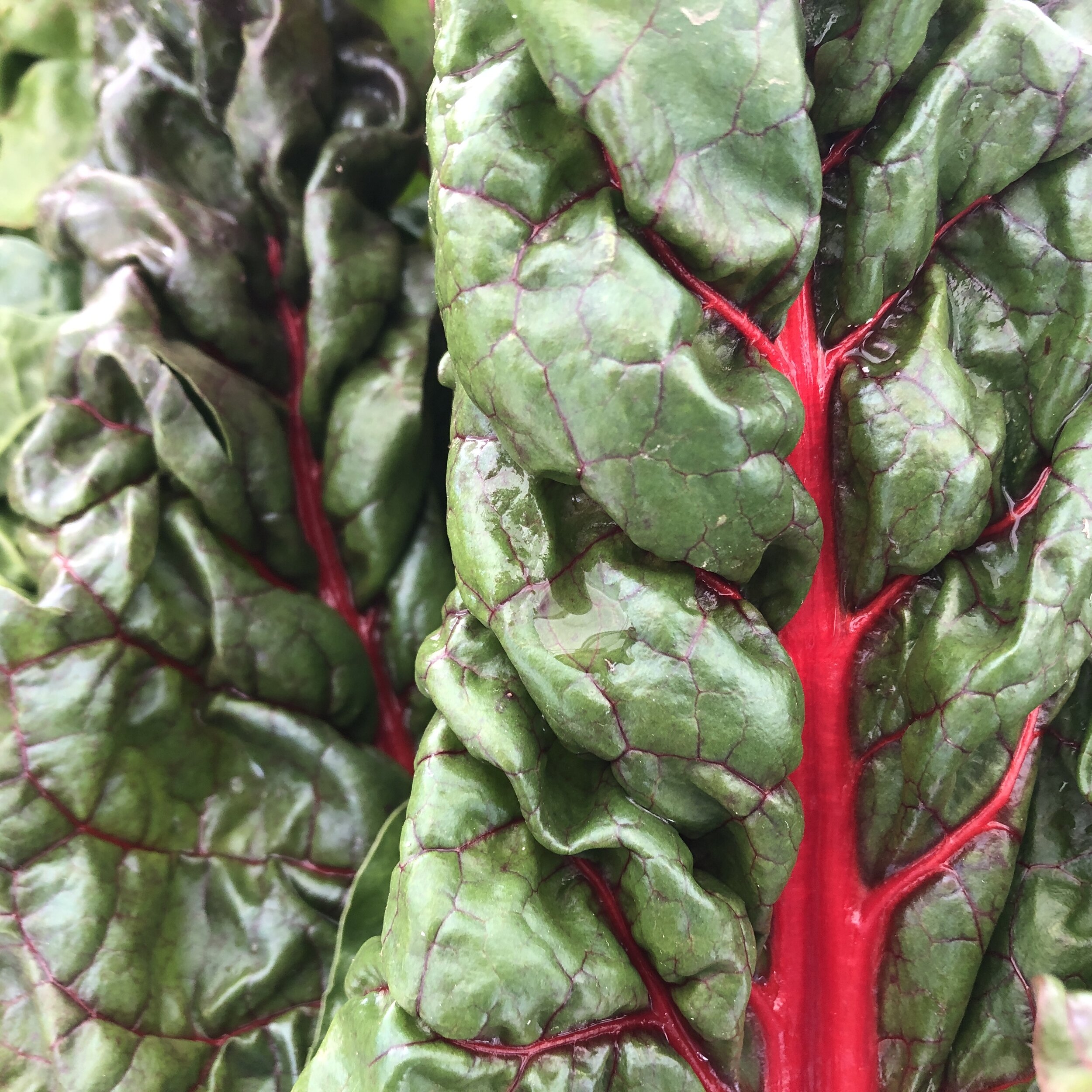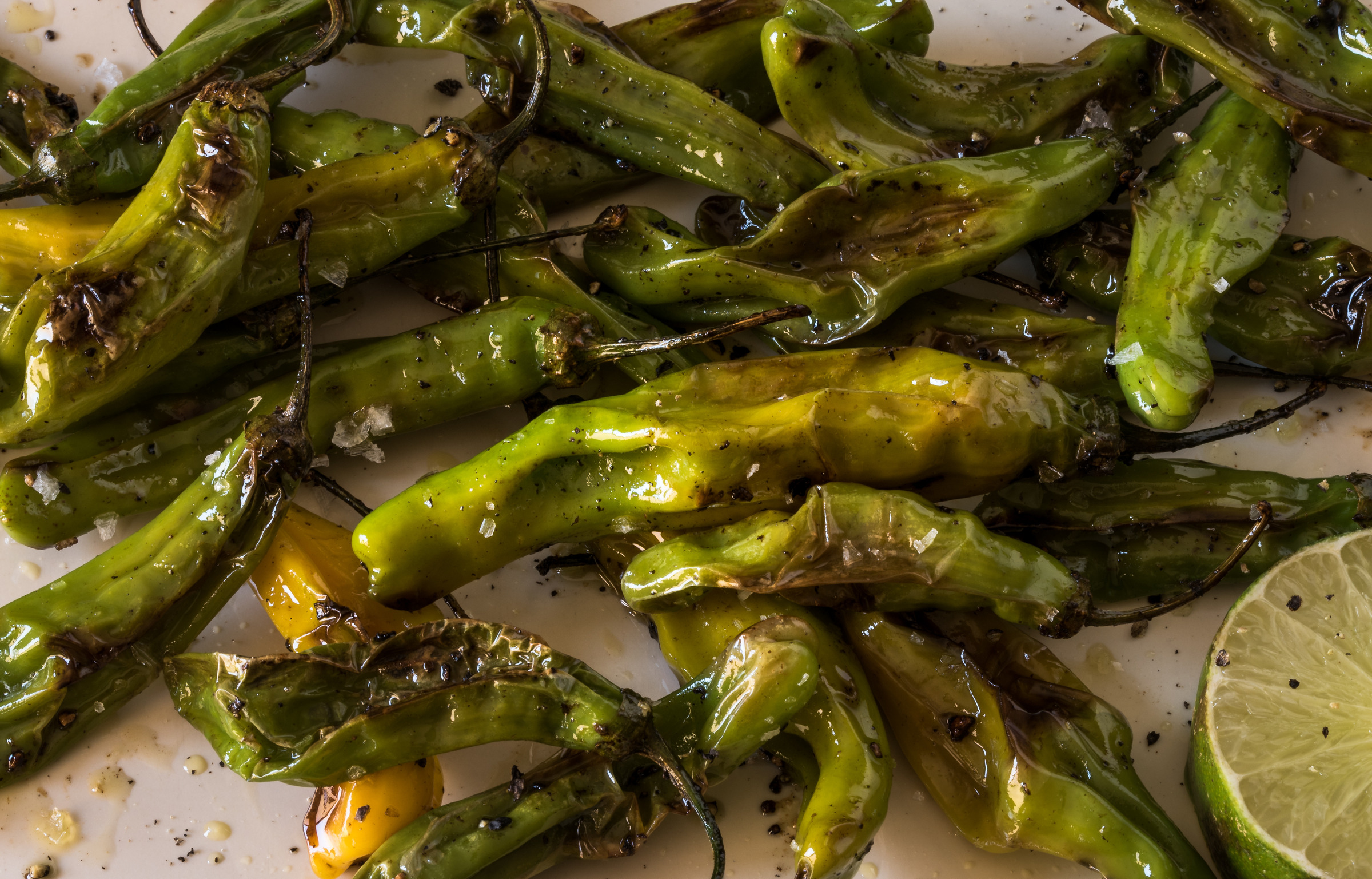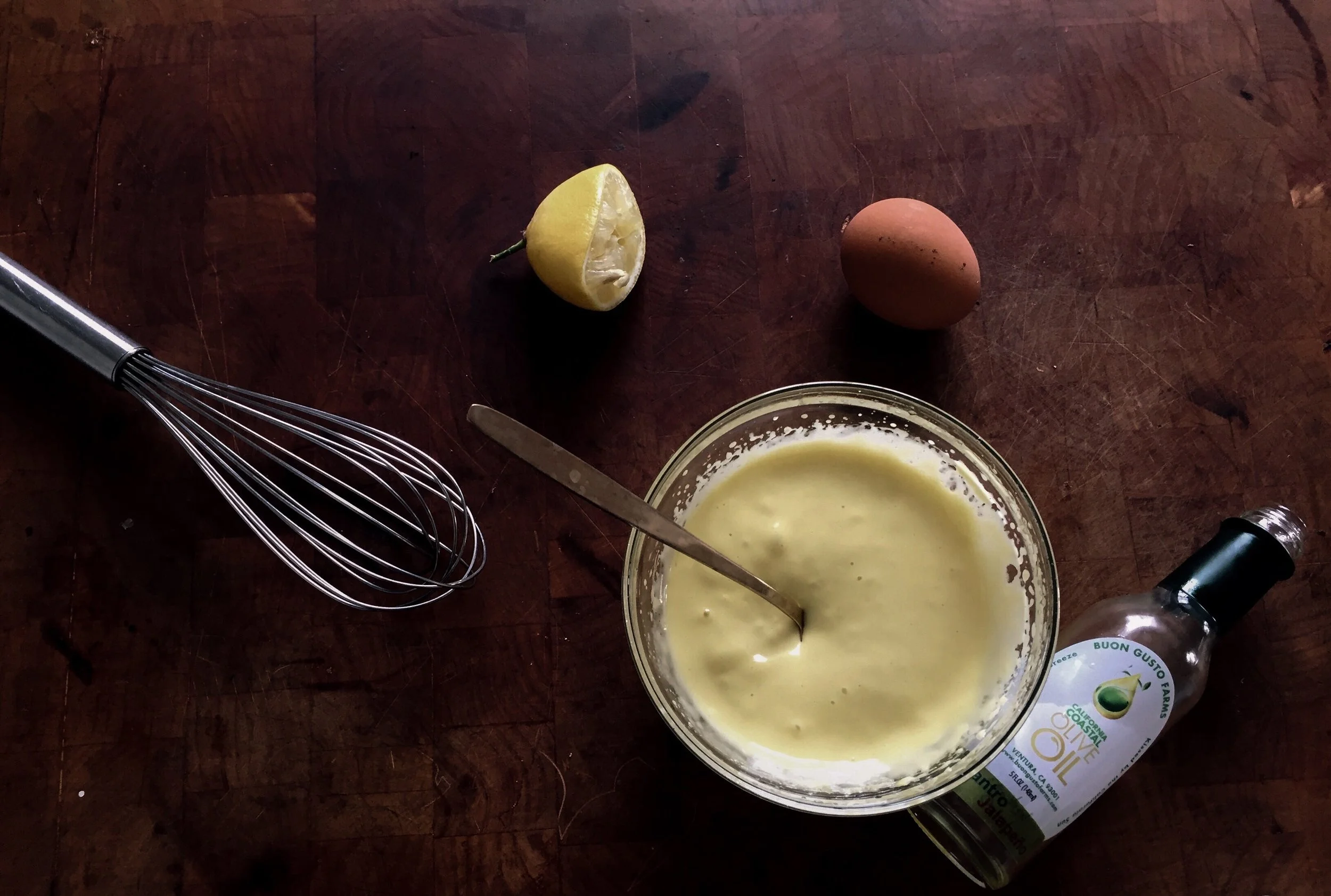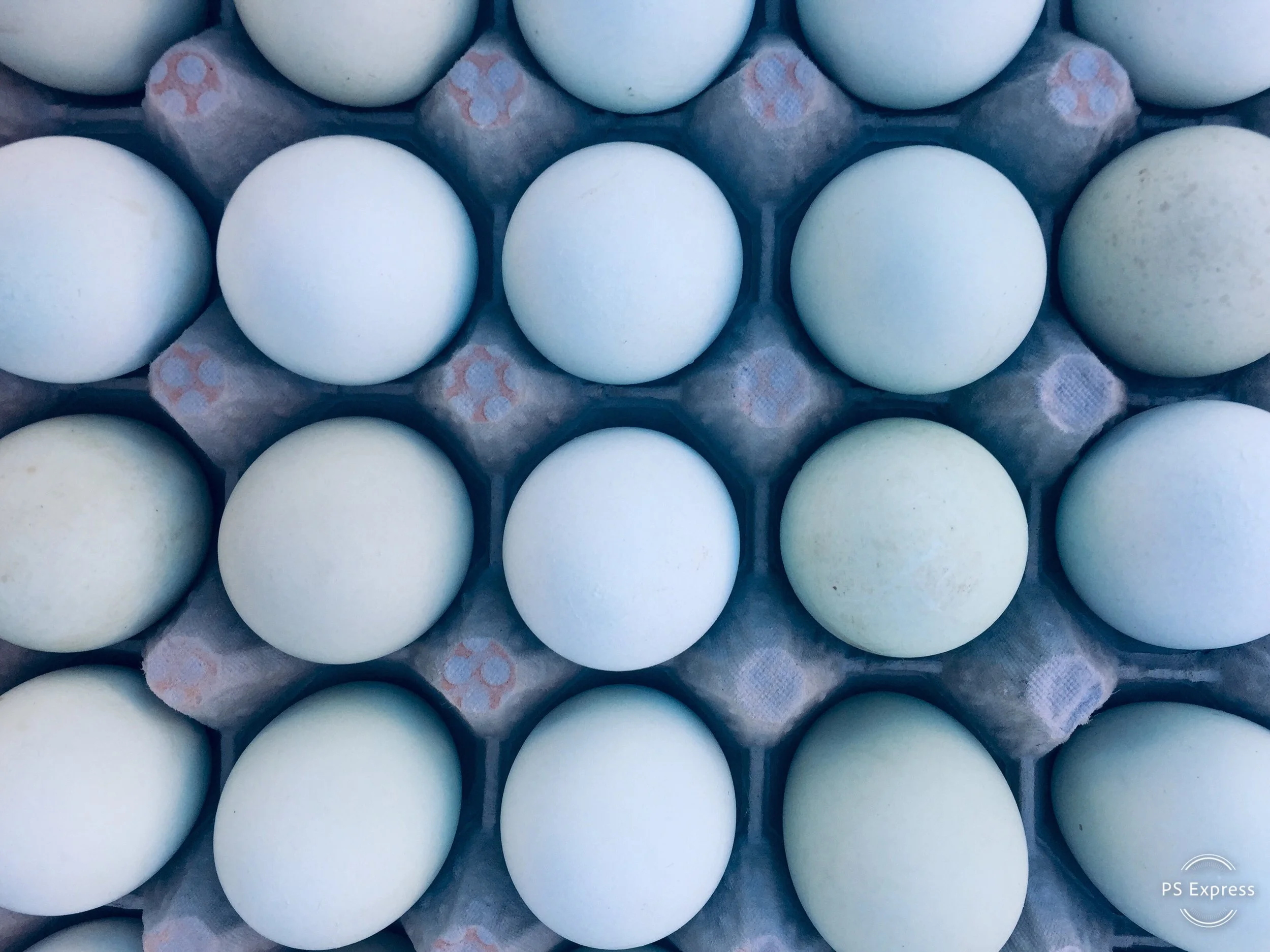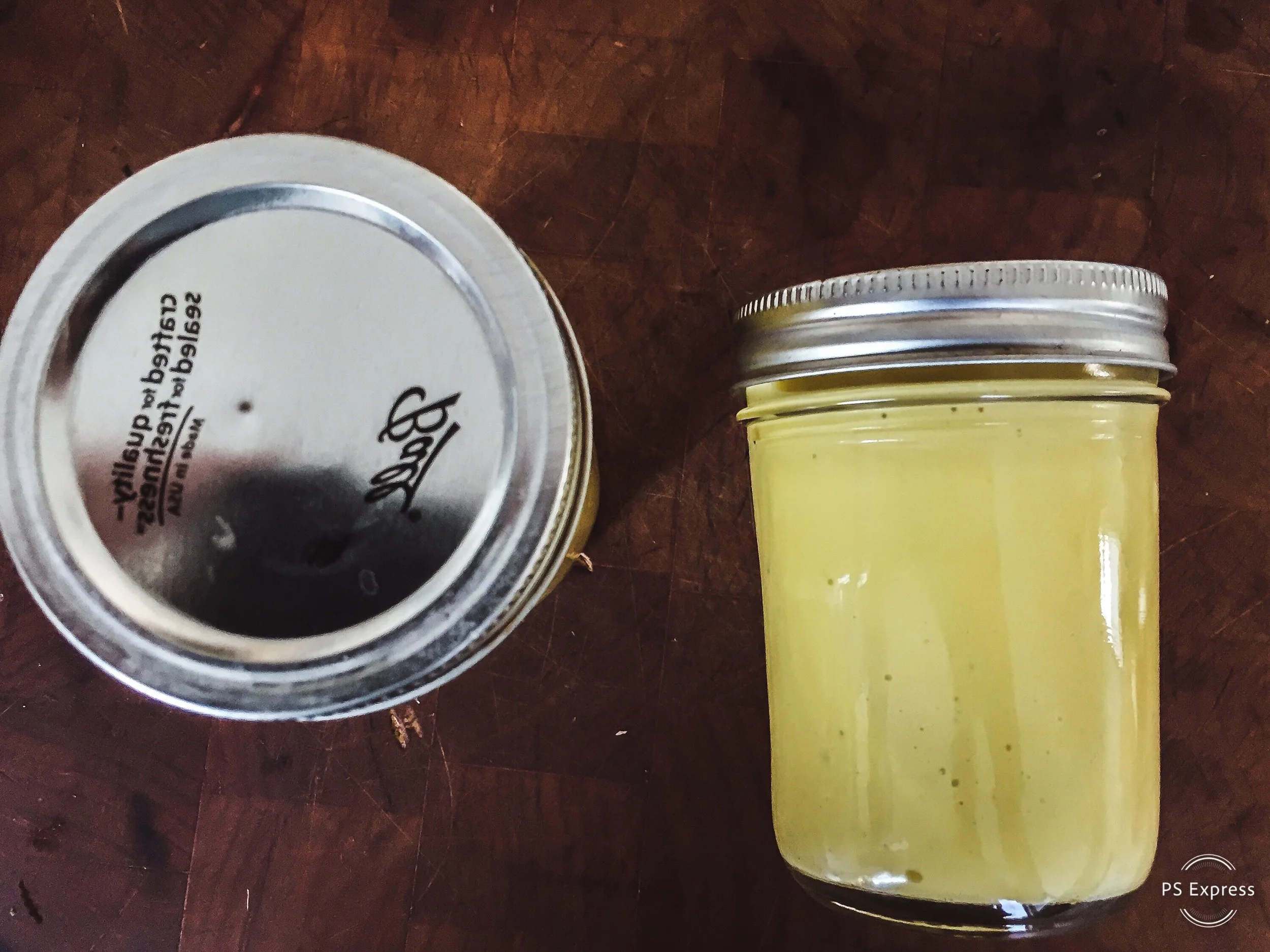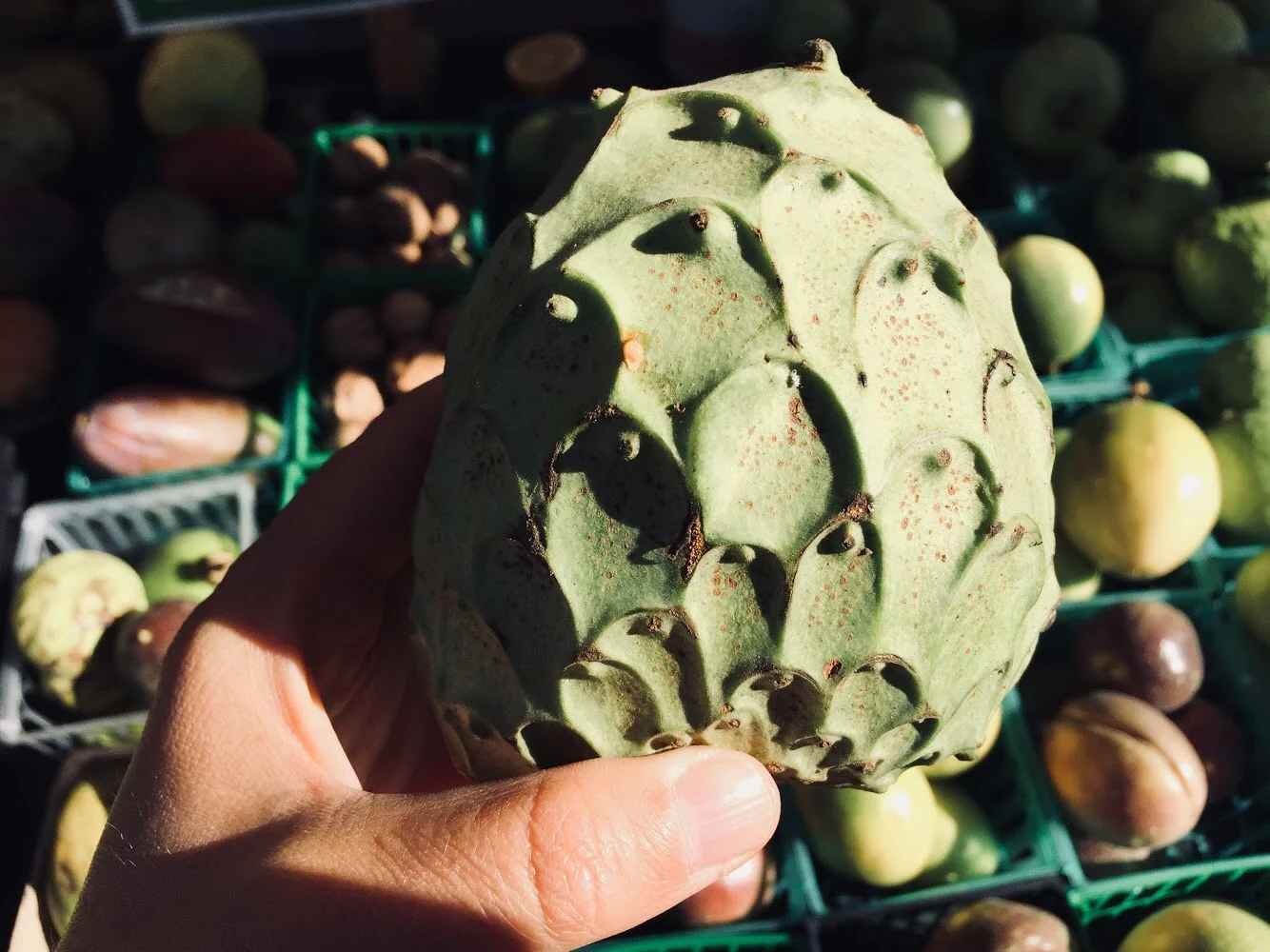The Second Sexiest Vegetable
It’s time to give cabbage her due! This denizen of the crisper, relegated to garnishes and pickling projects, is going main course. Why? Because nutrient-dense cabbage is as delicious as she is beautiful. And (duh) St. Patty’s Day!
It's raining again. And as long as we ignore the Instagram posts of snow and single-digit thermometer readings from the midwest, we Southern Californians can lament our long, cold winter. So crank up the oven: it's time for winter-veggie comfort food, starting with cabbage!
Admittedly, cabbage has a PR problem. Unlike her popular cousins kale and Brussels sprouts, cabbage is associated with an older crowd and — tragically — the word boiled. In fact, cabbage’s image has fallen to such depths, she’s now eligible to be considered ironic. Herein lies her comeback. Like the beets of yore, cabbage is waiting to be rediscovered. She’s also beautiful, delicious, and super great for you.
Buttery when roasted, crisp when pickled, and far more forgiving than Brussels sprouts, cabbage would be worthy of your attention even if she wasn’t a nutrition powerhouse. But she is. Here’s a nutrition rundown:
Cabbage has:
Cancer fighting glucosinolates
Antioxidant, anti-inflammatory and antibacterial properties
An insanely low caloric load
Vitamins C, E, K, A, fiber, folate, iron and magnesium
Let the cabbage-craze commence! These quick and delicious steaks are a mouth-watering place to start.
Cabbage Steaks Recipe
Makes 4 steaks
Ingredients:
1 Medium Cabbage
Grass-fed butter (I like Straus because it's made in the European style with a higher butterfat content)
Sprig of thyme
Salt and pepper
Instructions:
Pre heat oven to 400F
Slice your cabbage into 1/2” steaks
Lightly butter a casserole dish and place it in the warming oven
Melt 2 Tbs of butter in a cast iron pan over medium heat.
Place a single cabbage steak in your pan. Rub it around until it's generously coated with butter, let cook one minute, then flip and repeat on the other side. Transfer steak to your pre-warmed casserole dish (out of the oven). Repeat with the rest of your cabbage, adding butter often, and adjusting the temp so your butter doesn’t burn. When your casserole is lined with a single layer of cabbage steaks, sprinkle with salt and pepper, drop a couple sprigs of thyme on top, and stick it in the oven. Roast in oven for 15 minutes, then flip steaks and roast for another 5-10 minutes or until the steak is browned on both sides and the cabbage has the consistency of melted heaven.
Now taste.
I know what you're thinking. You've fallen head over heels in love with cabbage, and now you're afraid the weather is going to warm up and leave you longing. Here’s a secret: it’s good raw too. This sophisticated coleslaw recipe will carry you into spring. In addition to being sexy, cabbage is versatile.
Aubrey Yarbrough is the Community Development Manager for Farmer Mark. Before moving to LA she ran her own organic farm and cooked on the garde manger station of the award winning Elements restaurant in Princeton, NJ. She has contributed poetry to New American Writing and prose to Edible Jersey.
Portuguese Bread Soup
Few dishes are simultaneously comforting and fancy, nutritious and easy to make. Portuguese Bread Soup hits all the marks.
Few dishes are simultaneously comforting and fancy, nutritious and easy to make. Portuguese Bread Soup hits all the marks. Sure the recipe starts by frying sourdough bread in olive oil—but the rest of it is greens, beans and garlic, and a poached egg.
It is quite filling, and works best as a simple, stand-alone meal. I like to serve it on those rare occasions when friends come over for lunch. It is my go-to dinner for overnight guests arriving late.
I adapted this soup from a recipe found in Taste Magazine. The text below is pulled from Taste almost verbatim, with a few minor edits.
Ingredients
2 C country-style sourdough bread, torn into irregular, 1 inch cubes
3/4 C extra virgin olive oil
1 bunch Swiss Chard (leaves & stems separated, leaves torn, stems chopped)
1/2 white onion, diced
1 bunch cilantro
1 clove garlic
4 C chicken stock (can substitute veg stock)
1 C dried white beans (can substitute canned)
4 free-range eggs
salt & pepper
Instructions
1
If using dried beans: soak beans a minimum of four hours or overnight. Slow boil in stock or water until beans are tender.
2
Heat ¼ cup olive oil in a heavy skillet over medium-low heat. Add the bread and cook, stirring often, taking care not to burn. When bread begins to brown, about 5 minutes, remove from skillet and wipe skillet clean.
3
Add a tablespoon of olive oil to the skillet and warm over medium heat. Add the chard stems and onion and cook, stirring occasionally, until almost tender, about 5 minutes. Add chard leaves and cook, stirring occasionally, until both the leaves and stems are tender, another few minutes. Season with salt and pepper.
4
Add the cilantro, garlic and 1/2 cup olive oil, and 1/2 cup of chicken stock to a blender. Puree until smooth and season with salt.
5
Add the stock to a pot over medium heat, along with the chard and drained beans. Meanwhile, bring a shallow pot of water to a boil then reduce to the lowest temperature possible. While using a spoon to create a gentle whirlpool, crack each of the eggs into the water, one at a time. Cook until the whites are set and the yolks are still jiggly, 4 minutes.
6
Add the cilantro puree to the stock, chard and beans and stir. Taste and season with salt and pepper. Divide the bread between four bowls, and do the same with the soup base itself. Top each bowl with a poached egg and serve.
Christmas in a Jar
Arnett’s Winter Plum Jam is Christmas in a jar. It's sweet, it’s spiced, and it deserves a spot on your holiday table. (And what better place than inside a Christmas cookie?)
Arnett's Winter Plum Jam is Christmas in a jar. It's sweet, it’s spiced, and it deserves a spot on your holiday table. What better place than inside a Christmas cookie?
We took a traditional linzer cookie and added plum jam for a very merry treat! The dough of linzer cookies isn't too sweet, so the jam takes center stage!
Whats more, these fancy little cookies are quite easy to make.
This recipe is modified from NYTimes Cooking
INGREDIENTS
3 cups all-purpose flour
1 cup raw, skin-on almonds (or 3/4 cup almond flour)
1 ½ teaspoons ground cinnamon
1 teaspoon baking powder
1 teaspoon kosher salt
1 ½ cups unsalted butter (3 sticks)
1 ¼ cups granulated sugar
2 large eggs
1 teaspoon vanilla extract
1 cup Winter Plum jam
Powdered sugar, for dusting
PREPARATION
Pulse together flour and almonds in a food processor until the almonds are very finely ground. Add cinnamon, baking powder and salt, and pulse to blend. (Alternatively, whisk together flour, ground almonds or almond flour, cinnamon, baking powder and salt in a large bowl.)
Using an electric mixer, beat butter and sugar together on medium-high until the mixture is light, fluffy and pale, 2 to 3 minutes. Scrape down the sides of the bowl and add in eggs, 1 at a time, beating well after each addition. Add vanilla extract, and beat until everything is well combined, again stopping to scrape down bowl as necessary.
Add in dry ingredients all at once and mix on low speed, just until incorporated.
Divide dough in 2 equal pieces, and wrap each piece in cling film, patting into a 1-inch-thick disk. Chill at least 2 hours, up to 5 days ahead.
Heat oven to 325 degrees. Working with 1 disk at a time, roll out the dough between 2 sheets of parchment paper so it's about 1/8 inch thick. (Because of the almonds, the dough may crack in places while you’re rolling it out. This is O.K., just patch it up with scraps.)
Using a round cookie cutter 2 1/2 inches in diameter, cut out as many circles as possible. Take half of these circles and cut out a 1-inch circle from the interior of the larger circles, creating a doughnut shape that will become the top of the cookie. If at any point the dough becomes too soft to cut and cleanly remove from parchment paper, slide it onto a cookie sheet and chill for a few minutes in the freezer or refrigerator. Gather any scraps of dough, combine them and roll them out, chilling as necessary. Transfer dough circles to a parchment-lined baking sheet spaced 1 inch apart and bake until the edges are golden brown, 12 to 15 minutes.
To assemble the linzer cookies, spread about a teaspoon of Winter Plum jam onto the flat sides of the larger circles. Dust the tops of the cutout circles with powdered sugar and place on top of Winter Plum jam
5 Dishes to Cook before Summer's End...
If you haven’t made these recipes, you haven’t TASTED SUMMER. Here are 5 dishes you absolutely must make before summer’s end.
It’s Labor Day weekend! School is back in session, traffic is nuts and summer is winding down. Whether you’re ready to embrace fall, or you’re panicking because you didn’t get-in enough beach days, here are 5 dishes you absolutely must eat before summer’s end.
Salmorejo is gazpacho’s richer, smoother cousin. Like gazpacho, this is a chilled Spanish soup made with tomatoes—and that’s where the similarities end. The tomatoes in Salmorejo steep in hot water with onions, garlic and toasted bread, resulting in a soup that is not raw, but not quite cooked, and this in-between state tastes amazing. The soup get’s its orange color not from red peppers —a common misconception—but from blending in a steady stream of olive oil on high speed until it emulsifies. Trust us, this is a dish you’ll want to serve to your fanciest friends. (And you might as well print out the recipe, because they’re going to ask for it). Best of all it’s EASY!
What is summer without Ratatouille? There are legions of ratatouille recipes on the web, some claiming that each ingredient must be sautéed separately, others advocating for roasting everything together in the oven. The truth is, when you’re working with farmers’ market eggplant and just-off-the-vine tomatoes, your result is bound to taste delicious… but will it taste like authentic ratatouille? That is the question. This recipe is très Provençal. It calls for sautéing each ingredients individually (worth the effort), and it goes a step further by having you chop the veggies into small dice. The results in a robust ratatouille that’s never water-logged. If you close your eyes while eating this, you just might imagine that you’re on a stone porch overlooking a lavender field.
Blistered Shishito peppers are the perfect late-summer accompaniment to your aperitif. And if they take longer than 5 minutes to prepare, you’re doing something wrong. Shishitos are perfect pan blistered with crunchy salt — but are easy to dress up with a pinch of Aleppo pepper and a squeeze of lime.
Caponata is Sicily’s answer to ratatouille. It’s sweeter, richer, and more complex, with a splashes of vinegar, pinch of sugar and handful of capers. Caponata recipes, one to the next, can vary widely — but I’ve never met one I didn’t like. This recipe calls for red or white wine vinegar, I recommend going with a good sherry vinegar instead. And don’t even think about leaving the celery out.
Poulet au Pastis is the rare French dishes that tastes exquisite and turns out to be simple to make. Fresh fennel, pasture-raised chicken and local tomatoes put this simple chicken soup over-the-top. It’s easy enough to cook for your family, and tasty enough to cook for friends. Note: this dish assumes you are purchasing very small Provençal chickens. If you’re in the US — one will certainly do. Any anisette can sub for pastis: Pernod, absinthe, etc. (but don’t use sambuca, it’s sweet).
Aubrey Yarbrough is the Community Development Manager for Farmer Mark. Before moving to LA she ran her own organic farm and cooked on the garde manger station of the award winning Elements restaurant in Princeton, NJ. She has contributed poetry to New American Writing and prose to Edible Jersey.
10 Expert Meal-Prep Tips
Planning ahead can help us eat the nutritious foods that make up our best intentions (and steer clear of empty calories). Here are 10 expert meal-prep tips recommended by chefs and nutritionists!
Planning ahead can help us eat the nutritious foods that make up our best intentions (and steer clear of empty calories). Here are 10 expert meal-prep tips recommended by chefs and nutritionists!
1. Invest in air-tight storage containers (wide-mouth ball jars are cheap and work great).
2. Plan a weekly menu. Pick three meals & shop for them in advance. Smart planning makes for smart meal prepping.
3. Cook grains and beans in bulk! Tinned cans not only create waste, but most are lined with plastic. Throw a pot of beans on the stove & they'll be to use in salads, soups and dips all week long! Quinoa and brown rice can be frozen in ball jars for home-made, zero-waste minute-rice.
4. Roast veggies in bulk. Market beets for salad, fresh eggplant for pasta, and baby potatoes for a side dish can all go in the oven together!
5. Sauce making Sundays! Pesto, salad dressing, mayo, and marinara are so much better when they're homemade. By dedicating a Sunday afternoon sauce hour, you'll have them ready to use all week long.
6. Stock. Stock makes everything better. It adds nutrients and flavor, takes very little (active) cooking time, and it's made from food scraps. Start a stock bag in your freezer and add bones, carrot stems, left-over celery -- everything that won't last. Twice a month slowly boil the scraps in a pot of water & you'll never use a bouillon cube again!
7. Love leftovers! With a “cook once, eat twice” mindset, you’ll get more bang for your meal-prep buck!
8. Prep multi-use ingredients. Hummus can be an after-school snack, a sandwich spread, or eaten with eggs on toast. Beans are a base for chili, a topping for salad, a side dish to accompany roasted chicken! Having multi-purpose ingredients on hand allows for easy improvisation!
9. Stock your pantry: A well stocked pantry is a chef’s secret arsenal (Alice Waters has a whole book devoted to the subject), and this is doubly true for the prepper. There’s nothing worse than assembling your pre-prepped meal, only to realize that you’re out of oil, vinegar —you name it. My cant-live-without pantry items include: local olive oil, local honey, crunchy sea salt, sherry vinegar, capers, anchovies, thyme, cumin and fresh garlic and greens. (Those last two aren’t technically pantry items, but I find them indispensable).
10. Prepare and freeze one complete meal, lasagna, stew or enchiladas are great. Then when the unexpected occurs, you'll have a nutritious, homemade meal, ready to go!
Aubrey Yarbrough is the Community Development Manager for Farmer Mark. Before moving to LA she ran her own organic farm and cooked on the garde manger station of the award winning Elements restaurant in Princeton, NJ. She has contributed poetry to New American Writing and prose to Edible Jersey.
6 Recipes To Change How You Eat Cucurbits!
What do melons, cucumbers, squash and pumpkins have in common? They’re all members of the cucurbit family! And boy oh boy is this family versatile! Savory melon? Sweet zucchini? Get our favorite recipes!
What do melons, cucumbers, squash and pumpkins have in common? They’re all members of the cucurbit family! Cucurbits are high in B vitamins and can be found all over the world (the oldest cucurbitaceae fossil was found in Montana and hails from the Paleocene epoch). They thrive during the warmest months and their high water content keeps us cool as a cucumber!
Best yet, this family is versatile! From cantaloupe to zucchini, cucurbits can be found in sweet and savory dishes! Ready for inspiration? Start scrolling!
Recipe Courtesy of Bon Appetite
Photo Credit: @devan.grimsrud
INGREDIENTS
½ 6-lb. baby seedless watermelon
2 Tbsp. fresh lime juice
1 Tbsp. fish sauce
1½ tsp. sugar
2 sprigs basil, plus leaves for serving
¼ cup salted, dry-roasted peanuts
2 Tbsp. extra-virgin olive oil
Flaky sea salt
Preparation
Halve melon crosswise. Working with one half at a time with the cut side facing up, slice off irregular bite-size pieces.
Stir lime juice, fish sauce, sugar, and 1 Tbsp. water in a large bowl until sugar is dissolved. Lightly crush 2 basil sprigs by scrunching up in your hand and add to dressing along with watermelon; toss gently until coated.
Top with peanuts and basil leaves, drizzle with oil, and season with salt.
Recipe Courtesy of Bon Appetite
photo credit: @feastingathome
INGREDIENTS
1 pound cucumbers, halved, seeds removed
1 pound tomatillos, husks removed, rinsed
½ medium onion, thinly sliced, rinsed under cold water
½ poblano chile, seeds removed
1 garlic clove
¼ cup olive oil
¼ cup unseasoned rice vinegar
1 tablespoon chopped parsley
1 tablespoon chopped cilantro, plus leaves for serving
Kosher salt, freshly ground pepper
PREPARATION
Blend cucumbers, tomatillos, onion, chile, garlic, oil, vinegar, parsley, and chopped cilantro in a blender until very smooth; season with salt and pepper. Transfer to an airtight container, cover, and chill at least 2 hours. Serve topped with cilantro leaves.
Do Ahead: Gazpacho can be made 2 days ahead. Keep chilled.
Recipe courtesy of Bon Appetite, May 2003
Photo Credit: @kingtacos1
Ingredients
4 1/2 cups chopped seeded & peeled cucumbers (about 4 medium)
4 cups cold water
2 cups ice cubes
1 cup sugar
2/3 cup fresh lime juice
2 large pinches of salt
Additional ice cubes
Preparation
Combine 2 1/4 cups chopped cucumbers, 2 cups water, 1 cup ice cubes, 1/2 cup sugar, 1/3 cup lime juice, and 1 pinch of salt in blender. Blend until sugar dissolves and mixture is smooth but slushy, about 2 minutes. Transfer mixture to pitcher. Repeat with remaining chopped cucumbers, 2 cups water, 1 cup ice cubes, sugar, lime juice, and salt.
Place additional ice cubes in 8 glasses. Fill with cucumber drink.
Recipe adapted from: simplyscratch.com
Ingredients
2 cups freshly grated zucchini
1 cup organic whole wheat flour
1 cup organic all purpose flour
3 tablespoon cinnamon
2 teaspoons baking soda
1 teaspoon kosher salt
1/4 teaspoon baking powder
3 whole eggs
1 1/2 cups of honey
1/2 cup good olive oil
1/2 cup unsweetened applesauce
3 teaspoons pure vanilla extract
INSTRUCTIONS
Preheat your oven to 350 degrees and butter, butter two 9x5 loaf pans and line with parchment or butter and flour them, omitting the parchment paper.
In a large bowl, sift together the flour, cinnamon, baking soda and baking powder. Once sifted measure and add in the kosher salt.
In a separate bowl whisk together the eggs, honey, applesauce, oil and vanilla. Add in the grated zucchini. Pour the wet mixture into the bowl with the dry ingredients, stir until just incorporated and divide the chocolate zucchini bread batter among the two prepared pans. (about 2-1/2 to 3 cups per pan)
Bake in preheated oven for 40-45 minutes or until a tester comes back with a few crumbs still attached.
Allow zucchini bread to cool completely before removing and slicing.
Recipe adapted from: https://www.spicesinmydna.com/
Photo Credit: www.spicesinmydna.com
Recipe
Melon simple syrup
1 c. water
3/4 c. honey
2 c. cantaloupe cubes or balls
Cocktail
2 oz. melon simple syrup
1.5 oz. gin
1 oz. seltzer water*
melon balls/cubes
cucumber slices
ice
fresh mint
Directions
In a small saucepan, bring the water and honey to a boil. Let boil for 30 seconds, remove from heat, and let cool completely. Once cooled, add to a blender or food processor with the cantaloupe cubes/balls. Blend until completely smooth.
Add ice to a cocktail shaker along with a fresh mint leaf. Add the simple syrup and gin, and shake for 30 seconds. Fill glass with ice, a few melon balls and cucumber slices, and then pour in the drink. Top with seltzer, stir to combine, and garnish with mint, and extra cantaloupe/cucumber slices!
Recipe Courtesy of Bon Appetite
8 tablespoons extra-virgin olive oil
Add reserved squash and almonds to kale; toss well and season with pepper. Divide among bowls; drizzle with more dressing, if desired. Using a vegetable peeler, shave Parmesan over.
3 tablespoons balsamic vinegar
1/2 medium shallot, minced
1 teaspoon Dijon mustard
Kosher salt and freshly ground black pepper
1 1/2 cups 1/2-inch cubed butternut squash
1 bunch kale, stems removed, cut into 1/2-inch wide ribbons (about 5 cups)
3/4 cup whole almonds, toasted, coarsely chopped
Parmesan (for shaving)
Preheat oven to 425°. Line a baking sheet with foil. Whisk 5 Tbsp. oil, vinegar, shallot, and Dijon mustard in a small bowl. Season to taste with salt and pepper. Set aside. Combine squash and 2 Tbsp. oil in a medium bowl and toss to combine; season with salt and pepper. Transfer squash to prepared baking sheet and roast, turning occasionally, until squash is tender and lightly golden, about 20 minutes. Let cool slightly.
Meanwhile, heat remaining 1 Tbsp. oil in a large skillet over high heat. Add kale and cook, tossing frequently, until bright green and slightly wilted, 1–2 minutes. Remove from heat; add 3–4 Tbsp. dressing and toss to coat. Transfer kale to a baking sheet and cool slightly, about 5 minutes.
Add reserved squash and almonds to kale; toss well and season with pepper. Divide among bowls; drizzle with more dressing, if desired. Using a vegetable peeler, shave Parmesan over.
Aubrey Yarbrough is the Community Development Manager for Farmer Mark. Before moving to LA she ran her own organic farm and cooked on the garde manger station of the award winning Elements restaurant in Princeton, NJ. She has contributed poetry to New American Writing and prose to Edible Jersey.
Jam Making: True Confessions of a Locavore
Eating in-season doesn’t mean depriving yourself, if you preserve when the harvest is bountiful! And this Strawberry Jam with Thyme and Honey is a delicious place to start.
A couple months back, Market Manager Martha and I were invited to teach a cooking class at the Playa Vista Public Library. Our class was scheduled in the after-school bracket, and we were encouraged to make it both engaging for adults and accessible for kids. We settled on strawberry jam with thyme and honey. Strawberries are almost always in season, and jam is easy to make—but the honey and thyme in this recipe lend it sophistication. This jam will do on a PBJ, but it just begs to be paired with a bloomy rind cheese.
We decided to get our strawberries from C&L, thyme from Backyard Organic, our honey from LSG, and a lemon (to balance out the flavor) from Pedro's.
Pectin, a fiber found in the cell walls of many plants, is what gives jams their sticky consistency. Strawberries don't have much—but apples do! We got apples from YNT and practiced simmering their peels until our jam jelled, and the strawberry-honey-thyme balance was something we wanted to show off. We and our jam were set.
And then it started raining, torrentially.
Many foodies (of which, I'm one) will tell you never to wash a strawberry. With a thin, porous skin, they're little fruit sponges. When they get washed, or rained on, they get water logged, go bland. When they stay wet for days on end their flavor wains, drains, and they rot. The purpose of this jam class was to showcase cooling with local produce, but after five days of heavy rains, there wasn’t a fresh pint of strawberries to be found in local markets. But purchasing berries from the supermarket felt like a betrayal. We were beginning to despair, and then we checked our freezers!
Both Martha and I are in the habit of buying extra, and preserving produce. Together, we had enough frozen strawberries to make a large batch of jam! Whats more, having been frozen at their prime, they were bursting with flavor. Eight showed up for our jam making class in the library, and after stirring and chopping, each took home a jar of local jam: all because we planned ahead.
It's April again, and—again—it's easy to be a locavore. The sun is shining, she skies are blue, and artichokes and asparagus are popping up in farmers' markets. This is the time—just weeks out of winter—to think of the future. This week at the farmers’ market, I’m planning to buy an extra pint of strawberries, an extra bunch of asparagus, and an extra bag of fava beans, to pickle or preserve or stick in the freezer for a rainy day. Being a locavore doesn't have to mean going without. You can have your favorite produce all year long (and eat it too), as long as you prepare.
STRAWBERRY THYME JAM
Adapted from thekitchn.com
Makes 1 pint
INGREDIENTS
1 quart organic strawberries (approximately 3 cups)
3/4 cup honey
5 sprigs thyme
Peels from two organic apples
Squeeze of lemon
INSTRUCTIONS
Place a saucer or small plate in the freezer
Wipe strawberries with damp towel (avoid rinsing if possible). De-stem strawberries, halve them and crush them with your fingers.
Peel apples (aim for broad, thick peels that will be easy to remove from the jam later)
Strip thyme leaves from stem
Put strawberries, honey, apple peels, thyme and lemon in copper or stainless steel pot over high heat. Mash with potato masher until strawberries are evenly smashed
Bring to a bubble and cook over high heat for 6-10 minutes, stirring often. If you have a candy thermometer, we are looking for the jam to reach 210ᵒ, if not perform the plate test!
(This trick comes from jam master Jessica Koslow’s cookbook, “Everything I want to Eat, Sqirl and the New California Cooking.”) Spoon a dollop of jam on a frozen saucer and put it back in the freezer for one minute. Swipe your finger through the jam. If the jam parts and does not run back together — it’s ready! If not, keep put the plate back in the freezer, keep cooking the jam, try again in a few minutes.
When the plate test tells you you’re done, pick apple peels out of jam with a fork, and funnel hot jam into a clean pint jar. Your jam will keep for months in the fridge!
Aubrey Yarbrough is the Community Development Manager for Farmer Mark. Before moving to LA she ran her own organic farm and cooked on the garde manger station of the award winning Elements restaurant in Princeton, NJ. She has contributed poetry to New American Writing and prose to Edible Jersey.
My Favorite Health Food is Mayonnaise.
Can mayonnaise be health food? Market Manager Aubrey thinks so! Find out why!
I love mayonnaise. The, velvety emulsification of egg yolks and olive oil is both versatile and fancy, both haute cuisine and healthy. Why not? Scientists and nutritionists agree, egg yolks and olive oil are good for you. And whisking them together with a squeeze of lemon and a dollop of dijon doesn’t change that.
I know what you're thinking. Mayo has a nasty reputation, and for some good (and some not so good) reasons. The conventional condiment—made of vegetable oil and commercially farmed eggs—is often topped off with "flavors" and calcium Disodium EDTA. I'll leave that jar on the shelf. But let's get real. The reason most of us have been shy about the white stuff can be summed up in one word: FAT. For decades we were told that eggs—rich in cholesterol—were best avoided. And that oil, regardless of its type, was bad news.
It turns out we were wrong. Nutritionists now recognize that healthy fats are an important part of a balanced diet. Some suggest that healthy fats (like egg yolks and olive oil) might even help certain people lose weight! Drumroll: Mayo!
I make my homemade mayo as they do in the South of France, with extra virgin olive oil and with lemons! And because I use free-range, farmers’ market yolks, it turns a delicious golden hue. Buon Gusto's olive oil adds a spicy kick and lemon provides a fruity tang. Added bonus: nearly everything in this recipe be found locally at the farmers market!
RECIPE
2 free range egg yolks, separated
1 cup Buon Gusto olive oil (available at our Playa Vista market)
1/2 tsp salt
lemon juice, (start with 1/2 lemon, more to taste)
1 tsp good dijon (optional)
TECHNIQUE
Great mayo is a matter of technique. You can use a whisk in a pinch, but I recommend using electric beaters if this is your first time.
Place egg yolks, lemon juice, and dijon in a medium sized bowl. Beat with electric beaters until combined. With the beaters on high, drizzle olive oil in a thin steady stream, over the beaters. Adding the oil, veeeeery slowly, is the one and only trick to making great mayo. As you add the oil, the mixture will thicken and the color will fade. When your mixture is stiff, you're done! At this point taste and add salt accordingly. You also might want to add more lemon or dijon, depending on your preferences.
FIX BROKEN MAYO
If you find that your mayo has separated—don't despair! Here's a secret: it's easier to fix broken mayo than it is to make mayo right the first time! Take your broken mayonnaise mixture and pour it into a liquid measuring cup, or any bowl with a spout that's easy to pour from. Use a rubber spatula to get all that eggy oil out of the mixing bowl and set the broken sauce aside. Now, separate another egg, and drop the yolk in your mixing bowl. From this point on, it's just like before. You're going to whisk the yolk quickly and drizzle slooooowly, BUT in place of olive oil, drizzle your broken mayo mixture. Beat the egg yolk on high and slowly pour the broken mayo over the beaters in a thin, steady stream. The broken mixture and your mayo will come together in no time! Once it has a uniform consistency and an opaque color, proceed with olive oil, completing the original recipe, adding up to an additional cup of olive oil to balance the extra yolk. You'll probably want more lemon and dijon too, but taste first to be sure.
VARIATIONS…because mayo is versatile!
* Mexican Fusion Mayo: make the spread with Buon Gusto's Cilantro Jalapeño olive oil!
* Aioli: omit lemon, add garlic and voila!
* Cesar Salad Dressing: add anchovies and a touch more dijon and lemon! Whip to a semi-loose consistency. Whisk in grated parmesan to finish.
* Traditional American mayo: substitute neutral tasting avocado oil and use distilled vinegar in place of lemon.
Celebrate healthy fats!
And don't feel guilty!
Aubrey Yarbrough is the Community Development Manager for Farmer Mark. Before moving to LA she ran her own organic farm and cooked on the garde manger station of the award winning Elements restaurant in Princeton, NJ. She has contributed poetry to New American Writing and prose to Edible Jersey.
Introducing Cherimoya: Your New Favorite Fruit
The Cherimoya fruit is the offspring of a hermaphroditic flower AND Mark Twain celled it "the most delicious fruit known to men. But that’s not all…
The cherimoya (cher-uh-MOY-uh) is a fruit of curious contradictions. It's native to cold, high altitude regions—of the tropics. In fact, its name comes from the Quechua word "chirimuya," which means "cold seeds," as the seeds germinate in altitudes up to six thousand feet. And that's just the beginning...
The flower that begets this fruit is hermaphroditic.
The flower that begets this fruit is hermaphroditic. It begins its life female and within a matter of hours, transitions to male. This f-to-m transition keeps the flower from self-pollinating. By the time the pollen is produced, the ovum has withered. Bees not are not pollinator for cherimoyas. In the wild, Scientists believe a beetle makes the match, collecting pollen from male stamens, and delivering it to female ovums before they transition. When they’re cultivated outside their natural habitat, each flower has to be pollinated by hand.
And it's worth it! This is a fruity-tutti tropical explosion! Mark Twain called the cherimoya, "the most delicious fruit known to men." We agree but, ahem, women like them too.
But steer clear of the seeds. They're poisonous!
You can find cherimoya at Pedro's Organic Ranch stand. Their season starts in late fall and runs through spring.
Aubrey Yarbrough is the Community Development Manager for Farmer Mark. Before moving to LA she ran her own organic farm and cooked on the garde manger station of the award winning Elements restaurant in Princeton, NJ. She has contributed poetry to New American Writing and prose to Edible Jersey.
Back to School: Healthy Farmers Market Snacks
How perfect is the image of an apple on a school desk? They say an apple a day keeps the doctor away—and we love all advice that involves eating fresh fruits and vegetables from the farmers' market. Because it's back to school time (and cold and flu season is right around the corner), we've come up with some healthy snacks using farmers' market ingredients that are perfect for kids (or adults who are kids at heart...).
How perfect is the image of an apple on a school desk? They say an apple a day keeps the doctor away—and we love all advice that involves eating fresh fruits and vegetables from the farmers' market. Because it's back to school time (and cold and flu season is right around the corner), we've come up with some healthy snacks using farmers' market ingredients that are perfect for kids (or adults who are kids at heart...).
Fruits and Nuts
It doesn't get easier than spreading apple or pear slices with unsweetened nut butter or topping them with a nuts and honey mixture (Martha Stewart recipe). For a cracker spread, blend unsweetened cocoa powder and honey with a nut butter of your choice.
Vegetables
Kid-friendly vegetable snacks to make include cauliflower tots (Food 4 Tots recipe), kale chips (Eating Well recipe), and zucchini sticks (Delish recipe).
Smoothies and Juices
Who wouldn't love a chocolate avocado smoothie made with unsweetened cocoa powder with avocado and milk and sweetener of your choice (Parenting recipe). For juices, sneak vegetables into a mostly fruit blend—such as beet, apple, and spinach or tomato, carrot, spinach and apple (Inhabitots recipes). Also, consider add-ons. Raw Cane SugarJuice, a vendor at our Manhattan Beach Certified Farmers' Market, uses liquid chlorophyll in its juices for its germ-fighting potential. You can pick up juices or make your own and slip in immunity-boosting ingredients.








